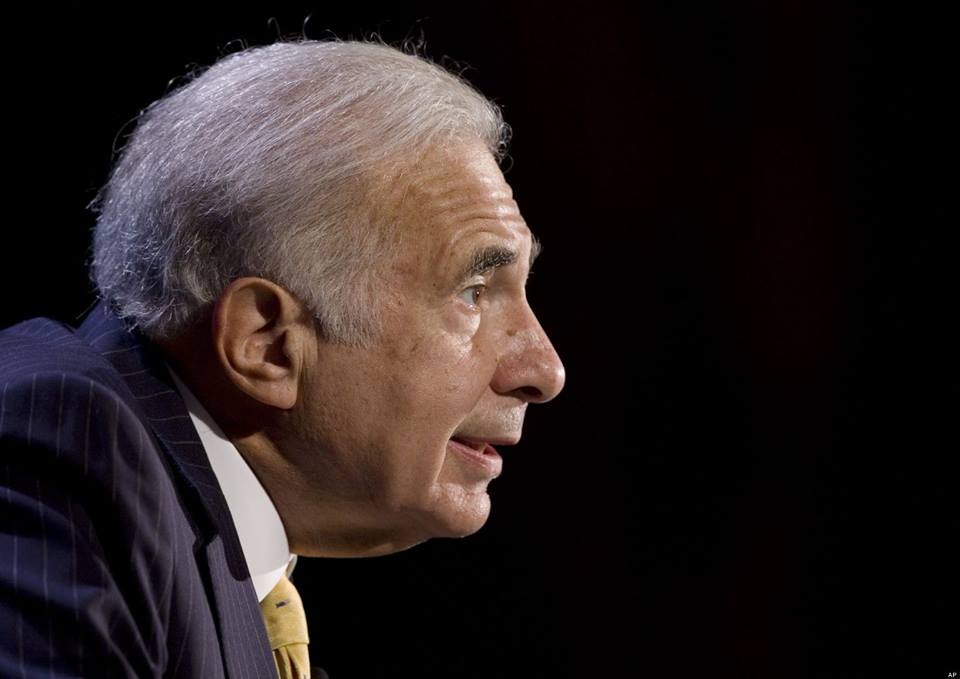Outperform the Market with Spinoffs Money Morning We Make Investing Profitable
Post on: 28 Июнь, 2015 No Comment

display>
By Jennifer Yousfi
In the world of investing, sometimes the separate parts are worth more than the whole.
Those parts are called corporate spin-offs, and as far as investment plays go, they can be one of the safest and most-profitable hands that investors can play especially against a market backdrop as uncertain as the one we face now.
In general, spin-offs let the markets more accurately value the operations separately, says Louis Basenese, editor of The Takeover Trader . So it’s important to know the parent companies’ motivation. Are they divesting underperforming assets to revive the parent stock, or breaking out quickly growing operations being held back? In my experience, if you stick to spin-offs of the latter, you’ll be handsomely rewarded.
There are many reasons a corporate parent might decide to spin-off a subsidiary. And as Basenese said, the parent’s motivations are key to making good investment picks. Here are some examples of investor-friendly reasons for a spin-off:
- Streamlining or consolidating business operations.
- Tying management performance more closely to the subsidiary’s performance.
- Freeing a subsidiary that is being held back by the parent corporation’s regulatory environment or other factors.
There have been numerous studies done on how spin-offs tend to outperform the market as well, if not better, than their former corporate parents. According to a study titled Restructuring Through Spinoffs, published in 1993 by Penn State University, spin-off companies outperformed peers and the S&P 500 Index by approximately 10% per year in the first three years after the initial spin-off.
Story continues below
The study, which looked at 25 years of market history, also found that parent companies outperformed peers by more than 6% the year after the spin-off.
A 1999 McKinsey study of 168 corporate restructurings showed that spin-offs substantially outperformed the market. The McKinsey study of companies spun off between 1988 and 1998 showed that the new firms had a two-year annualized total return to shareholders of 27%, versus 14% for the Russell 2000 and 17% for the S&P 500.
Spin-offs tend to outperform because investors often sell when they receive stock in a new company they never intended to own, keeping share prices low initially. Also, index fund managers sell off spin-off shares if the new company is not added to the original parent company’s index. Institutional fund managers will also sell spin-off shares due to lack of liquidity or dividend.
At the same time, management’s performance will have a greater impact on the shares of the spin-off than it had on the parent company, often spurring greater efforts to innovate and succeed.
A Spin-Off that Streamlines
If someone asked: What fast-food company is the world leader in terms of total restaurant locations? Most people would probably guess McDonald’s Corp. (MCD ), but the correct answer is fast-food rival Yum! Brands Inc. (YUM ), with 34,000 locations.
Yum is the proprietor of such well-known brands as KFC, Pizza Hut, Taco Bell, Long John Silver’s and A&W All-American Food Restaurants. Yum also has East Dawning, an Asian-markets chain operated by its Yum! Restaurants International (YRI) division.
The former PepsiCo. Inc. (PEP ) subsidiary was spun-off in 1997 under the name Tricon Global, which was later changed to Yum in 2002. In the words of one PepsiCo executive, restaurants weren’t our schtick, The Economist reported .
Freed from the beverage giant corporate parent, President and CEO David C. Novak was able to develop economies of scale across Yum’s various restaurant brands. Prior to the spin-off, the chains had acted more like competitors. But Novak was able to unify the various lines and put their combined purchasing power to work to score better terms from suppliers.
Novak also centralized advertising for the chains. Dual locations, where products from two chains were offered at the same location, were opened. Such innovation helped push Yum to the top the fast food industry and have allowed Yum shares to increase almost 400% from its 1997 spin-off.
That growth has been due in large part to a successful overseas strategy. Yum has done exceptionally well in China, where most consumers think of KFC when they think of chicken. And now the company is planning to expand further into India, another emerging market with a rapidly growing middle class.
Yum plans to open several Taco Bell locations in India in the latter half of 2008. India’s Economic Times reported that Yum, which already has KFC and Pizza Hut locations in India, plans to double its revenues from India in the next three years, with most of this growth coming from Taco Bell.
Yum also has been pushing to increase domestic sales by revamping U.S. menus, increasing breakfast options, and reducing company ownership through a re-franchising program of its KFC and Pizza Hut brands, The Associated Press reported. And it looks like that hard work is starting to pay off.
UBS AG (UBS ) recently upgraded Yum shares to a Buy from Neutral. In a note to clients, analyst David Palmer said while some investors have expressed concerns that the U.S. re-franchising appeared to slow versus company guidance in 2007, we expect to see that trend reverse in 2008 and 2009.
We believe the end result for Yum will be a faster-growing, more-international, higher-return company by 2010 with 40% or more of its enterprise value coming from its rapidly growing China business, Palmer added.
Yum shares have traded between $28.37 and $40.60 in the past 52 weeks. Yesterday (Tuesday), shares closed at $38.06.
A Spin-Off that Gives Back
Tech conglomerate EMC Corp. (EMC ) first acquired VMware, Inc. (VMW ) in 2004. In three short years, the virtualization solutions subsidiary grew from 300 employees to 3,000. In 2007, EMC decided to take VMware public.

EMC management saw the initial public offering of VMWare shares as a way to reward shareholders and employees alike.
The offering will unlock more of VMware’s value for EMC shareholders, and help the company retain and attract the software industry’s top talent, EMC Chairman, President, and CEO Joe Tucci said in a statement, InfoWorld reported .
The proceeds of the new share sale will provide VMware with the financial resources it needs to achieve its full growth potential and provide EMC with the potential to return a portion of the original investment in VMware to EMC shareholders, while enabling them to continue to enjoy the vast majority ownership in this strategic and fast-growing business, David Goulden, executive vice president and chief financial officer of EMC, said at the time.
Shares of VMware were initially priced at $29 per share and publicly listed on August 16, 2007. The stock rocketed to a high of $125.25 in October, but since then have lost nearly two-thirds of their value and are currently trading at $51.72 as of the close yesterday.
A sluggish U.S. economy has certainly taken its toll on this tech stock. but brighter days could be on the horizon.
Earlier this month, Wachovia Securities (WB ) analyst Philip Rueppel upgraded VMware to Outperform from Market Perform, the Associated Press reported. He also raised his earnings and revenue estimates for the company’s first quarter. In a note to clients, Reuppel called the recent pullback in VMware shares overdone.
Recent concerns have led to a steep decline in VMware shares, but we believe near-, medium-, and long-term fundamental drivers remain robust, Rueppel wrote. In the long term, we feel VMware shares do not fully reflect the potential from incremental product platforms which leverage long-term industry trends, such as desktop virtualization.
This is a two-for-one bit of good news. A rosy outlook for VMware means good news for EMC as well, as the primary stakeholder, EMC still holds 86% of VMware stock.
A Spin-Off that Liberates
Philip Morris International Inc. (PM ) is the latest Altria Group Inc. (MO) spin-off as part of Altria’s continuing restructuring process. Altria divested its remaining interest in Kraft Foods Inc. (KFT ) to shareholders late last year.
On March 28, one share of Philip Morris stock was issued to every Altria shareholder of record as of March 19. Altria distributed 100% of shares and no longer holds a stake in PMI.
The spin-off will free Philip Morris from the strict tobacco regulatory environment and decline in smoking population of the United States and allow it to focus on overseas operations, where sales are still climbing.
As part of the spin-off, the new firm was also able to close its New York headquarters, which is estimated to save $250 million in overhead annually, former Altria and new Philip Morris Chief Executive Officer Louis C. Camilleri said on a conference call, MSNBC reported . The new firm’s headquarters will be in Lausanne, Switzerland where it can better oversee its international operations in 160 different countries.
Shares of Philip Morris International opened at $52.40 on March 31 and since then have dropped 8% to close at $48.20 yesterday.
But Morgan Stanley (MS ) analyst David Adelman believes the spin-off is a good long-term strategy.
There is little evidence that the [previously] existing holding company structure added real operational value (whereas it unequivocally adds cost), Adelman told investors in a research report.
News and Related Story Links:
- The Economist:
VMware Rebounds After Upgrade
- MSNBC.com:














